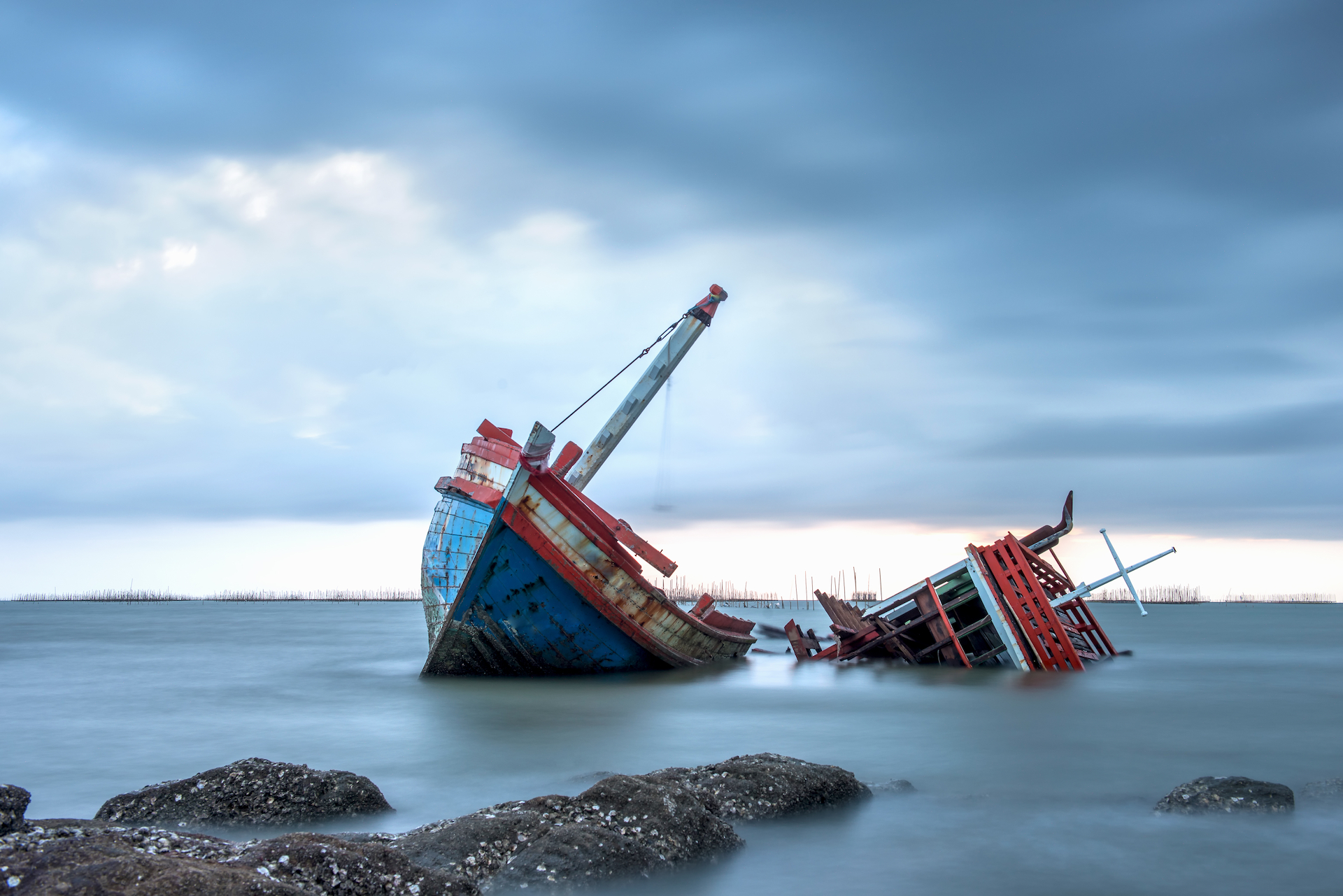
Publication
Senate Bill 29 on track to further Texas’ push as business hub
The Texas Business Court was established as a specialty court to handle complex business disputes on June 9, 2023, through the passage of H.B. 19.


Global | Publication | July 2019
The Canadian Wrecked, Abandoned or Hazardous Vessels Act, S.C. 2019, c. 1 (the Act) will come into force on July 30, 2019. The Act implements the Nairobi International Convention on the Removal of Wrecks, 2007, also known as the Wreck Removal Convention, into Canadian law.
The Act will affect the P&I insurers of any vessels operating in or passing through Canadian waters (Canada’s inland, internal and territorial waters) or the Canadian Exclusive Economic Zone (EEZ). The Act requires the operator or master of almost every vessel involved in a maritime casualty that results in a wreck to report the wreck to the regulatory authorities. If the wreck is deemed to pose a hazard to navigation, the environment or to the coastline, the owner must take all practicable measures to establish the wreck’s precise location and take proportionate measures to mark and remove it. These provisions apply regardless of vessel size, and the vessel owner is strictly liable for those costs.
The Act also requires owners of all vessels over 300 GT in Canadian waters and all Canadian vessels over 300 GT (wherever they are operating), to carry proof of a financial guarantee (referred to as “Wreck Removal Insurance” by Transport Canada) to respond to wreck removal costs, including the costs incurred to assess whether the wreck is a hazard. This “Wreck Removal Insurance” must allow for rights of direct recovery against whomever issued the insurance if the vessel owner does not pay for wreck removal and related costs.
The word “insurance” as used by Transport Canada, the Act and the Wreck Removal Convention, is a fundamental misnomer because the insurer has no defenses under the insurance policy and the Canadian Marine Insurance Act does not apply. The Wreck Removal Insurance required by the Act is really a financial guarantee issued by the insurer (or other party) to pay for wreck removal and other costs if the owner of a vessel fails to do so.
Under Article 10 of the Wreck Removal Convention, the only defenses available to a vessel owner to avoid paying for wreck removal are if the maritime casualty
It will likely be difficult to satisfy the very high bar of “wholly caused by” because a casualty typically arises from a plurality of events.
The party providing Wreck Removal Insurance can rely on the Article 10 defenses and one additional defense: if “the maritime casualty was caused by the wilful misconduct of the registered owner.”
This means that a wreck removal claim must still be paid out under Wreck Removal Insurance even if a maritime casualty occurs when
Breaches by the insured of the Wreck Removal Insurance policy, or the underlying hull and machinery or P&I insurance policies, have no bearing on whether the insurer must reimburse wreck removal costs incurred by third parties, except in cases of deliberate scuttling by the insured.
Therefore, insurers may want to include express provisions in the Wreck Removal Insurance policies to entitle them to recover from the insured any amount paid out for claims that may have been caused or contributed to by a breach of that contract, or the hull and machinery or P&I insurance policies for the vessel.
In exchange for providing the guarantee of financial responsibility, the party providing the Wreck Removal Insurance is permitted to limit its liability under this insurance to the vessel’s limitation amount pursuant to the Convention on Limitation of Liability for Maritime Claims (the “Limitation Convention”). This is important because vessel owners themselves cannot avail themselves of limitation for wreck removal claims in Canada. Canada specifically exempted claims related to wreck removal from the Limitation Convention.
However, this may be of cold comfort because under the Limitation Convention, the property damage limitation amount for a 300 GT vessel is approximately C$2.8m (the limitation amount increases as the vessel gets larger). This is a significant amount and exceeds many liability insurance policies, which have limits of C$2m in coverage at most.
The other difficulty that insurers may encounter is this limitation amount is based on special drawing rights (SDRs), which is a currency used for international conventions based on an averaging of five international currencies (the US dollar, euro, Japanese yen, British pound sterling and Chinese renminbi). During the last five years, the value of 100 SDRs has ranged from a low of C$163.00 to a high of C$201.69 and it can fluctuate throughout the day just like any other currency. Therefore, the Wreck Removal Insurance is for a maximum amount that can vary significantly over the course of a one-year policy.
Transport Canada has pointed out that the compulsory Wreck Removal Insurance provision in the Act corresponds to the compulsory insurance provisions of other well-accepted international maritime conventions dealing with liability and compensation (i.e., International Convention on Civil Liability for Oil Pollution Damage the “CLC,” and International Convention on Civil Liability for Bunker Oil Pollution Damage, 2001, or the “Bunkers Convention”). International P&I Clubs are accustomed to issuing “Blue Cards” as proof of the necessary financial security required by these conventions.
However, the application of the CLC and the Bunkers Convention to Canadian vessels and vessels in Canadian waters is much narrower. The CLC only applies to tankers carrying persistent oil in excess of 2,000 tons and the Bunkers Convention only applies to vessels over 1,000 GT with fuel on board to operate machinery or the vessel itself. Therefore, the Act’s compulsory insurance provisions have a much bigger footprint in Canada than do the existing conventions which also require compulsory “insurance.”
The increase in the number of vessels affected by the Act in Canada is best illustrated by the facts stated by Transport Canada in creating a new fee for compulsory insurance certification services. It is not enough to carry Wreck Removal Insurance – the vessel owner also needs to file proof of this with Transport Canada. Under the Bunkers Convention and the CLC, Transport Canada issued 750 certificates evidencing compliance per year. This is expected to increase four-fold to 3,000 certificates with those that are now required under the Wreck Removal Convention. Transport Canada plans to charge ship owners C$98 per certificate.
Transport Canada states that a towed vessel (the Tow) is often much larger than the towing vessel (the Tug) and more likely to become a wreck, particularly if it has no power of its own. While the Act holds the Tug owner liable for the costs of locating, marking and removing the wreck of the Tug itself, it does not hold the Tug owner liable for the wreck of the Tow. The Tow owner carries those responsibilities in relation to the Tow.
If the Tow is also a vessel over 300 GT and compliant with all provisions of the Wreck Removal Convention, the Tow owner can readily be held liable for the costs incurred. However, if the Tow is not registered with compliant Wreck Removal Insurance, finding and holding the Tow owner liable could prove difficult.
Therefore, while the Tow owner remains liable for wreck removal costs of the Tow, the onus has been put on the Tug master to ensure, prior to the towing operation, that if the Tow does not have Wreck Removal Insurance, the Tow has an exemption issued by Transport Canada. Failing to produce proof of compliance by the Tow is an offence, punishable by a fine of up to C$100,000.
Not only do these provisions impose liability personally upon seafarers, they make last-minute or casual subcontracting of towing jobs by dispatch far riskier because Tug companies are advised to first check if the Tow owner has organized the necessary Wreck Removal Insurance or an exemption from Transport Canada. Tug companies should revise their contracts with customers who own Tows which are more than 300 GT to provide that the Tow will have compliant Wreck Removal Insurance (or the necessary exemption) and provide proof of it. The contract should provide that any delays in providing that information are of the responsibility of the Tow customer, and Tug owners may want to include indemnity provisions should the Tow owner fail to comply with the Act and the master of the Tug be penalized as a result.
Not only do the wreck removal laws in Canada now include liability for locating, marking, assessing, mitigating and removing a wreck, wreck removal is likely to get much more expensive for insurers and ship owners through the delegation of the government’s powers. The Act provides that
6(1). The [government] may . . . enter into agreements … for carrying out the purposes of this Act and authorize any person, including a provincial government, a local authority and a government, council or other entity authorized to act on behalf of an Aboriginal group, with whom an agreement or arrangement is entered into to exercise the powers . . . or perform the duties or functions under this Act that are specified in the agreement or arrangement.
Therefore, governmental authority could be outsourced to a third party, including
There will be a potential multiplicity of third parties having a role in managing a wreck removal operation – ranging from provincial authorities to local governments to First Nations and others – each with its own concerns or agenda for protecting the affected coastlines and waters. The Act does not address the accountability of those third parties when exercising their delegated authority.
The mitigation and removal measures that one delegated authority may consider reasonable may vary wildly from what another delegated authority dictates.
The Act does not specify how the regulators’ decisions may be challenged or the regulator be held accountable. The one guarantee of the new regime is that wreck removal costs will increase, probably many-fold.
In order to stay competitive in the commercial marine business, we expect that both dedicated marine underwriters and multi-line insurers insuring Canadian vessels and vessels operating within Canadian waters will have to offer Wreck Removal Insurance. As insurers cannot rely upon any contractual or statutory defenses before paying wreck removal claims up to C$2.8m, those insurers may refuse to insure any vessels that are not the highest quality and therefore, least likely to be involved in a wreck removal claim. Insurers may decide to add recovery provisions to their contracts if claims are paid out to third parties notwithstanding breaches by the insured of the underlying insurance policies. If it becomes difficult or prohibitive to buy Wreck Removal Insurance due to its cost or strict terms, the obligation to do so may be ignored by the owners of the very vessels that are most likely to become wrecks.
In the tug and tow business, delays may be incurred while the parties try to manage Tow owner compliance issues. Contracts may be revised to incorporate the Tow owner’s obligation to have the necessary Wreck Removal Insurance or an exemption.
At least initially, compliance with the Wreck Removal Insurance regime is being enforced through an honor system. The end result, we predict, is that barges and old, large ships will be hidden away on Canada’s coasts without any insurance whatsoever – out of sight, out of mind, until a casualty occurs.

Publication
The Texas Business Court was established as a specialty court to handle complex business disputes on June 9, 2023, through the passage of H.B. 19.

Publication
The Texas Business Court has repeatedly held that it lacks subject-matter jurisdiction to hear cases first-filed before September 1, 2024—regardless of the procedural posture by which the case arrived at the Business Court.
Subscribe and stay up to date with the latest legal news, information and events . . .
© Norton Rose Fulbright US LLP 2025